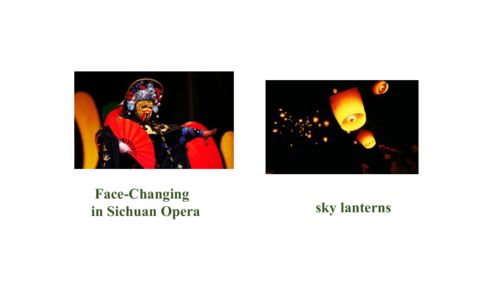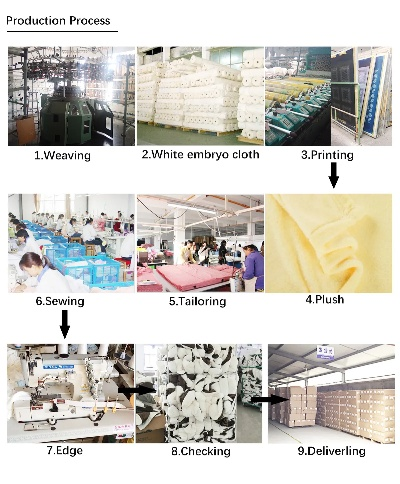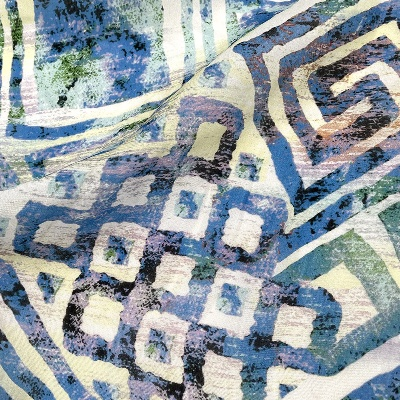The Complexities of Textile Weight:A Guide to Grading and Understanding
This article delves into the intricate world of textile weights, providing a comprehensive guide on how to grade and comprehend these complex measurements. The discussion covers the various factors that contribute to determining the weight of textiles, including fiber type, weave pattern, and manufacturing process. Additionally, it explores the importance of understanding textile weights in various industries, such as fashion, interior design, and industrial production. By understanding the nuances of textile weights, readers can make informed decisions when purchasing or using textile products, ensuring they meet their specific needs and expectations. Overall, this article serves as an essential resource for anyone interested in textiles and their associated weights, providing valuable insights and guidance for those seeking to navigate the complexities of this fascinating subject.
Introduction: In the world of textiles, the concept of weight is not just an arbitrary measurement; it's a crucial factor that dictates the quality, durability, and functionality of garments. The term "weight" refers to the amount of material used in a single piece of fabric, often measured in grams per square meter (g/m²). In this guide, we will delve into the intricacies of textile weight, including its definition, classification, and how it affects the performance and end-users. We'll also present some practical examples to illustrate the nuances of weight measurement and its impact on consumer choices.

Textile Weight Definition: Textile weight is essentially the measure of the amount of fibers or materials used in a single square meter of fabric. It is expressed as g/m² and can be categorized into various groups based on their composition and intended purpose. For instance, staple fibers like cotton are generally lighter than synthetic fibers like polyester, but both have different characteristics and suit different applications.
Classification of Textile Weight:
-
Staple Fibers: These are natural materials like cotton, flax, and hemp, which are softer and more breathable than synthetic fibers. Staple fibers are usually lighter in weight due to their lower density and shorter fiber lengths.
-
Synthetic Fibers: These include polyester, nylon, and acrylic, which are stronger and more durable but heavier in weight. They are designed for high-performance applications where weight is critical.
-
Blended Fibers: These combine the properties of two or more different fibers to create unique properties. For example, a blend of wool and polyester can offer warmth and comfort while being lighter in weight.
-
Wool: This is a natural fiber that comes from sheep's wool. Wool has a higher density than staple fibers and is therefore heavier. However, it's well-known for its insulating properties and is often used in winter wear.
-
Polyester: This synthetic fiber is lightweight and highly resistant to wear and tear. It's commonly used in sportswear and outdoor clothing due to its durability.
-
Nylon: This is another synthetic fiber that is strong and elastic. Nylon is often used in athletic wear and swimwear due to its resistance to moisture and odor.
Practical Example: Consider a case study involving a shirt made from a blend of polyester and wool. This shirt would have a lighter overall weight compared to one made solely from polyester, but it would still retain the durability and warmth of the wool fibers. The lighter weight could be advantageous for those who need to move around a lot or prefer breathability over extra weight. Conversely, a shirt made entirely from polyester would be significantly heavier but would provide superior wrinkle resistance and stain resistance.

Impact of Textile Weight on Performance: The choice of textile weight can significantly impact the performance of garments. For example, lightweight materials like spandex can be used in sportswear to enhance flexibility and mobility, while heavyweight materials like wool can be used in winter wear to provide warmth and comfort without adding unnecessary bulk.
Consumer Perception: Consumer perception plays a crucial role in determining the perceived value of textiles based on their weight. Some consumers may prioritize weight for aesthetic reasons, while others may choose lighter materials for comfort or mobility purposes. Brands must carefully consider their target audience and tailor their product offerings accordingly.
Conclusion: Understanding the complexities of textile weight is essential for consumers, manufacturers, and designers alike. By examining the various factors that influence weight, we can make informed decisions about the materials and techniques used in our garments. Whether you're looking for the perfect balance of performance and comfort or simply want to explore the endless possibilities offered by textile weight, this guide provides a comprehensive overview to help you navigate the world of textiles with confidence.
大家好,今天我们来聊聊纺织品克重问题,克重是衡量纺织品质量的一个重要指标,对于消费者来说,了解克重有助于选购合适的产品,下面我们将通过一个英文案例和表格来详细说明。
纺织品克重概述
克重通常以“克/平方米”来表示,它是衡量纺织品厚度和密度的关键参数,纺织品克重的高低直接影响到其使用性能和价格,高质量的纺织品通常具有较高的克重,因为它们采用了高质量的材料和工艺。
案例分析
假设我们有一个消费者在购买衣物时遇到了纺织品克重的问题,他购买了一件标榜高克重的衣服,但穿上后感觉并不合身,经过调查,我们发现衣服的实际克重与宣传不符,为了更好地解决这个问题,我们可以参考以下案例:

案例:消费者购买了一件声称具有高克重的衣物,但实际穿着感觉偏薄,经过测量,发现实际克重远低于宣传的数值,这可能是因为生产过程中的误差、材料选择不当或者工艺控制不严格等原因导致的,为了解决这个问题,消费者可以咨询卖家或查看其他消费者的评价,了解更多关于该产品的信息,消费者也可以考虑选择其他品牌或款式,以避免类似的问题发生。
英文表格说明
以下是英文表格用于说明纺织品克重问题:
表格1:纺织品克重参数对比
| 项目 | 高克重产品 | 低克重产品 |
|---|---|---|
| 材料质量 | 高品质纤维 | 一般纤维 |
| 工艺水平 | 高精度纺织技术 | 一般工艺 |
| 克重单位 | 克/平方米 | 克/平方米以下 |
英文口语化内容示例
Hi,大家对纺织品克重问题有什么看法吗?我来给大家分享一个案例。
最近我购买了一件衣物,宣传时标榜高克重,但实际穿着感觉偏薄,经过测量,发现实际克重远低于宣传的数值,这可能是因为生产过程中的误差或者材料选择不当导致的,大家在购买纺织品时,除了关注价格和品牌外,还可以注意查看产品的详细参数,如克重等,也可以咨询卖家或查看其他消费者的评价,了解更多关于该产品的信息,这样可以帮助我们更好地选购合适的产品。
纺织品克重问题是一个比较常见的问题,消费者在选购纺织品时需要注意产品的参数和评价信息,通过了解纺织品克重参数和案例分析,我们可以更好地选购合适的产品,希望这个英文口语化内容能够帮助大家更好地了解纺织品克重问题。
Articles related to the knowledge points of this article:
The Components of Textile Polyethers:A Comprehensive Analysis
Global Ranking of Textile Firms A Comprehensive Analysis
A Comprehensive Guide to Selecting the Right Textile Products
The Fabric of Success:A Case Study on Fujian Tianyuan Textiles
Empowering Threads:Join Our Team at Yi Pin Textiles
Technological Advancements:The Backbone of Digital Transformation



